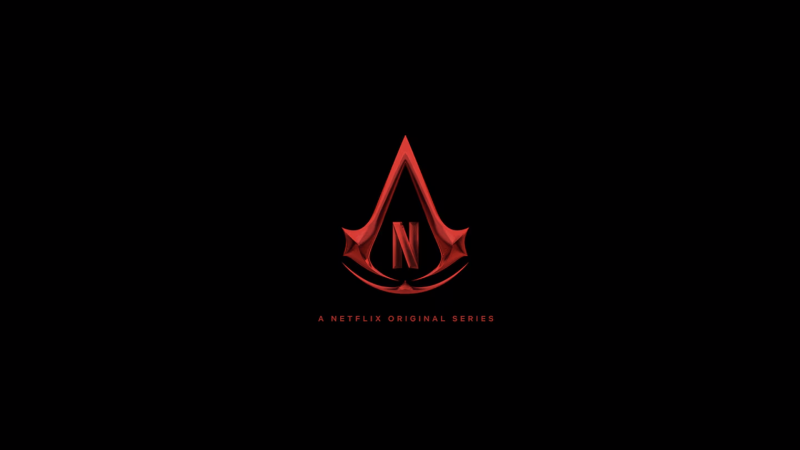Giving Up on Element and Matrix.org

Tl;dr: After five years of using Matrix.org/Element as my primary communication platform, and rooting for it, and promoting it, and enduring its many quirks, I’ve decided to move on (or rather back). Despite promising ideals and growing institutional adoption, the network remains slow, unreliable, and confusing for everyday users. Development feels directionless, client and server projects are fragmented, and the user experience still lags far behind my expectations. A recent incident that essentially broke my own community channel on the Matrix.org homeserver was the final straw: I’m heading back to XMPP.
For the past few years, I’ve been trying to make Matrix.org, and with it the Element client applications, my primary platform for communication. When Mozilla announced its move to Matrix back in 2019, it felt like the ecosystem was finally taking off. A wave of third-party clients and Matrix.org-based projects emerged, and I eagerly hopped on the bandwagon. I gradually phased out my presence on IRC and XMPP, hopeful that this would be the next Slack- or Discord-killer.
Five years later I’m leaving the Matrix.org ecosystem with a bruised eye and the bitter aftertaste of a future that never arrived. Let me explain.
Disclaimer: I know the difference between Matrix.org, the foundation, and Element, the product developed by New Vector, the company. However, in order to tell the story for the casual reader, from a user perspective, I am intentionally leaving out such details.
Early days
Matrix.org began just over a decade ago as a federated messaging protocol. Its primary goal was to make real-time communication seamless across different providers, similar to how SMTP enables cross-provider email.
“Wait, isn’t that exactly what XMPP has done since forever?”, you might ask. And you’d be right. Matrix.org essentially reinvented the wheel, swapping out XML for JSON and incorporating technologies like WebRTC and, at some point, end-to-end encryption (E2EE) as built-in rather than an extension, although from a practical standpoint it doesn’t make much difference as long as metadata is still unencrypted.
The project originated inside Amdocs, a software company founded by the Aurec
Group in Israel, which is headquartered in St. Louis, Missouri, USA today, and
employs over twenty-nine thousand people. Amdocs itself has an interesting
(read: controversial) history, with investigations by U.S. federal agencies
into alleged espionage. The history around Amdocs has been debated for a few
years now, with
Matrix people (“Agents”? *scnr*) rebutting the supposed
conspiracy theories every once in a while, but that’s a story for another
time.
What matters here is that Amdocs funded most of Matrix’s development from 2014 until the end of 2017, under a subsidiary named Vector Creations Limited. When that funding ended, the UK-based company New Vector Limited was formed to continue development of the protocol and its main client, Riot (now known as Element).
That’s when Matrix.org seemed to gain serious traction. The community rallied to support the newly independent project. Organizations like KDE, companies such as Purism and Status, and even the French government got involved. But while enthusiasm surged, the implementation quality of core components remained mediocre at best.
The official Matrix homeserver, Synapse, was built with a tech stack ill-suited for its long-term goals and scale. The protocol also implemented features that drove overall complexity through the roof. Community projects like Dendrite emerged to rewrite the homeserver more sensibly. Some efforts, like Conduit, even received government funding to stabilize the foundation Matrix.org was built on.
Use Matrix!
After Mozilla’s bold move, New Vector hit the accelerator and went all gas no brakes. E2EE became the default for all private conversations. Riot was rebranded as Element. Within two years, New Vector effectively took over Dendrite as its official future homeserver implementation.
Meanwhile, Matrix.org continued to attract interest, especially from European
governments eager to reduce their dependencies on U.S. tech giants. France’s
central administration adopted Tchap, a software based on Matrix.org,
Germany’s armed forces and healthcare institutions rolled out Matrix-based
tools, Luxembourg launched its creatively named Luxchat4Gov, and even
Sweden’s social insurance agency joined in.
The sense that Matrix.org was finally taking off was further reinforced by the rise of projects like SchildiChat and FUTO Circles, and by the announcement of Element X, a new native client promising to eliminate the UX and performance woes of the old Electron-based Element app. It all sounded too good to be true.
Encouraged by the hype, I doubled down on my engagement with Matrix. I launched an official community channel on Matrix.org for topics related to this site and persuaded several friends to give the platform a try. Group chats, DMs, community discussions: I wanted Matrix and Element to succeed. I wanted to love the platform.
Fast-forward
Today, I’m writing this post to say that I’ve lost hope and patience.
After five years of using Matrix and Element as my main platform, I no longer have the energy or desire to keep using it, much less convince others, especially the people close to me, to do the same.
Despite all the perceived hype a few years ago, the basics of the platform remain undercooked. New Vector seems to be chasing too many goals simultaneously, with no clear direction. Just a few months ago, they migrated to the Matrix Authentication Service (MAS), which was supposed to be a leap forward, yet lacks even essential security features like 2FA/MFA. Meanwhile, the company appears to have begun quietly phasing out the classic Element app in favor of Element X, even though it still misses crucial features like threads and spaces, besides the less important things like widgets, grouping by priority, and live location sharing.
Yes, Element X is faster than its Electron predecessor, but only relatively. Compared to other popular communication apps like Signal, Telegram X or WhatsApp, it’s still slow. Launching the app requires network synchronization that hampers responsiveness. Especially on older devices (like my GrapheneOS tablet) the whole UI feels sluggish in a way you’d usually only expect from poorly built hybrid apps. On more modern flagship devices the experience isn’t significantly better either.
The Matrix.org service, especially its matrix.org homeserver, is also slow,
especially on thinner broadband connections. On my laptop, I’ve been using
iamb, a TUI Matrix client, and even there I experience delays of
tens of seconds when launching it, and a lag of several seconds between pressing
Enter and seeing the message actually appear in the chat room. And that’s
certainly not iamb’s fault, because it’s written in Rust, btw™. If
you’re accustomed to IRC, XMPP, or even bloated platforms like Discord, you’ll
likely find Matrix painful to work with in comparison.
This had been my experience with the Element
web client, even these days. The video was not slowed down, it literally takes
almost 40 seconds for the web UI to just load, with the browser tab running on
100% of a CPU core and munching through plenty of RAM. Once loaded, using the
web UI isn’t much smoother either.
Over the years I’ve tried several times to find a way to abstract these performance issues, e.g. by using Matrix via Irssi, the popular IRC client, and a Matrix-IRC-bouncer software. However, each of these attempts fell short of important features, most prominently the lack of E2EE between the bouncer and Matrix, rendering the whole end-to-end-encryption promise that Matrix is making useless.
Speaking of E2EE, device cross-verification is another thing that has been haunting Matrix/Element users for years and has only gotten less broken in the past year or so. The story goes like this: Whenever you log on from a new device, you have to cross-verify the device using either a secret key or, more comfortably, another device that has already been verified. Not only has this feature been particularly complicated to implement for 3rd-party clients, but even the official Element and Element X clients have struggled to get it right up until recently. Verifications would either not start at all or simply break in the middle of the process, requiring users to re-start the process or ultimately give up and use their secret key.
With the complexity of the underlying protocol and its encryption, the pace at which it evolved and the lack of proper first-party libraries for 3rd-party developers to build on top of, it became visible that the once-vibrant ecosystem, does no longer look so healthy. Development on Synapse alternatives has stagnated. Even Conduit, despite its government support, is largely dormant. Dendrite still isn’t production-ready for large deployments. And while many community members self-host it, the project has yet to prove it can scale robustly.
On the client side, things aren’t much better. The FUTO-funded
Circles client shut down in 2025, with a quite telling reason.
Other clients like SchildiChat are faced with the dilemma of continuing their
existing work or starting over by forking Element X. Given the divergence in
tech stacks, adopting the newer matrix-rust-sdk seems inevitable, but costly.
Speaking of SDKs, New Vector appears to lack a coherent technology strategy. They’ve built infrastructure in Python and Node.js/TypeScript, moved into Go for the Synapse replacement, and now maintain a Rust-based client SDK, while abandoning their Go client library (which is now community-maintained). This fragmentation isn’t just messy, but it’s expensive. Especially for an organization that appears perpetually cash-strapped. New Vector’s approach feels more like indecisiveness than the right tool for the right job when looking through their repositories on GitHub.
Note: As of writing, the official Element Dendrite implementation uses Go libraries that haven’t been updated in months or years, with dependencies that are equally stale.
Maybe it’s you?

It’s always worth asking “Is it me?”, before condemning something as bad or
broken. In search of other perspectives, I found mostly positive comments on
/r/matrixdotorg and similar sites, from people actively using
Element/Matrix, which, well, isn’t surprising. However, the deeper I dug,
the more I stumbled upon blog- and
forum-posts, and comment threads
filled with experiences that echoed many of the issues I had
observed and described, e.g.:
Matrix was never good. Have you met a person who actually enjoyed using Matrix? Because, I haven’t. This isn’t to say that Matrix isn’t more usable than other open alternatives, but that’s a low bar. There’s a reason why “Unable to decrypt message” is a common gag in the FOSS community. The promise of what Matrix could become, plus, being already more accessible than other open alternatives, was what kept me there. I’m willing to bet it’s the same for many others. However, I’ve come to terms that these ambitions will not be realized, at least in the current direction
Yes, cartoon person with cat ears, that’s exactly what kept me on Matrix/Element as well! I could go on for hours linking to posts that criticize the platform’s functionality. And while this might be a case of confirmation bias, it feels like there don’t seem to be as many dedicated posts praising how great Matrix Element X is as there are write-ups of people going into great length to describe their negative experiences with the platform. Then again, the confusing naming (“SEO”) makes it difficult to find things in the first place. Just imagine the average Joe googling things like “What to do when Matrix doesn’t work”, or “Why won’t Element start?” – oh boy.
Matthew, if you’re reading this: We both know that naming things is one of the hardest problems in computer science, right after cache invalidation. I totally get the geeky, 31337 thrill a name like Matrix might evoke, but believe me when I say that using generic names is a bad idea. Things would have been a lot easier for everyone involved if you had at least rebranded Riot to something more distinctive. For future rebrandings, I highly recommend using the Synthwave Band Name Generator and some good old human creativity. :-)
The straw that broke the camel’s back
In early July, I opened Element X on my phone and noticed an eerie silence in my community channel there. It wasn’t unusual for the channel to be quiet, but this felt off. I tried posting something. Nothing sent.
Puzzled, I switched to my laptop and loaded app.element.io, only to discover
that the channel was gone, or at least, I appeared to have left it. It now
showed up under “Suggested”, as if I could rejoin. But I never left it.
Back on Element X, I still appeared to be a member. I suspected a browser glitch, so I tried it from a clean profile without extensions and cached data. Same result.
Attempts to rejoin the room failed. Amongst literally dozens of other JavaScript warnings and errors, even with uBlock Origin turned off – w.. t.. f.. – the browser’s developer console showed this particular one:
rageshake.ts:69 [getVersion] Room !PHlbgZTdrhjkCJrfVY:matrix.org does
not have an m.room.create event
rageshake.ts:69 Failed to update sticky room Error:
!PHlbgZTdrhjkCJrfVY:matrix.org does not belong to a tag and cannot be sticky
at M.doUpdateStickyRoom (Algorithm.ts:196:25)
at M.updateStickyRoom (Algorithm.ts:163:14)
at M.setStickyRoom (Algorithm.ts:115:18)
at G.handleRVSUpdate (RoomListStore.ts:147:32)
at H. (RoomListStore.ts:115:85)
at i.emit (events.js:158:7)
at H.setState (RoomViewStore.tsx:207:14)
at H.viewRoom (RoomViewStore.tsx:433:18)
at H.onDispatch (RoomViewStore.tsx:220:22)
at Object.invokeCallback (dispatcher.ts:115:9)
I reached out to a few channel members, asked in the official Element Web
channel on Matrix.org, and also contacted the Element support (ticket
2386). The next day, gonzalo, who runs his own homeserver, helped me
investigate. Surprisingly, he was still part of the channel and could chat with
others. But accounts on matrix.org, including mine, couldn’t interact with it
at all.
gonzalo and I tried joining the channel with different matrix.org accounts,
which also failed with the following error for both of us:
MatrixError: [403] No create event in auth events (https://matrix-client.matrix.org/_matrix/client/v3/join/%23root%40localhost%3Amatrix.org?server_name=matrix.org&via=matrix.org)
It was as if the matrix.org homeserver had somehow lost the room, without
communicating this to the rest of the network. Even stranger, from gonzalo’s
point of view, I was still in the room, just offline:
I attempted to elevate his permissions via the Space that the channel belonged
to, but even though I could add him as an admin, he never saw the change
reflected. And I couldn’t even revoke it:
So much for (overly complex) permission models and Matrix federation. I would be genuinely curious what exactly broke that led to the status of the room seemingly become FUBAR. If it is indeed an issue with the Matrix.org homeserver having lost a handful of important events along the way, then I’d be curious to know how bad the situation could turn out for other communities or maybe even enterprise customers using the platform.
Note: To prevent comments like “Well, it’s your fault, because you should
have just dropped a message to/in 
Sure, I probably could have gone the extra mile and open an issue on GitHub, or
cc the @matrix.org address, or taken any number of other steps. But, from a
real-world user perspective, that’s all nonsense. It’s not the user’s
responsibility to understand the separation between Matrix.org and Element,
nor to figure out whose responsiibility a particular issue falls under. That
separation was a deliberate choice made by Matrix.org/Element, not by the
user, which means it’s on them to have the support pipelines in place that
clearly guide users to the right channels. That’s simply not happening.
I tried to
reach someone who felt responsible enough to help.
Goodbye Matrix.org
With no access to the matrix.org server logs and no response from the support
whatsoever, I’ve all but closed the Element chapter in my mind. Till this day
I haven’t heard back from the support team, and I still haven’t regained access
to my channel. While the channel was home to only a few dozen idlers – unlike
the SimpleX room that has accumulated over a hundred people in a
fraction of the time – it is nevertheless sad to have lost it just like that.
At least this post can hopefully serve as a cautionary tale for others who are
considering hosting their community on Matrix.org’s homeserver.
Between the slow performance, the increasing amount of spam, the miserable web client, and the unfinished state of Element X, the Matrix.org network is not something I am willing to continue to recommend, especially to non-technical users. Normal people are simply tolerating it to communicate with idealistic nerds like myself who insist(ed) on using it.
Despite my experience with Element and Matrix.org over the past years, I still believe that they won’t be going anywhere soon. European governments in particular seem willing to endure all sorts of digital torture if it means reducing dependency on U.S. big tech. After all, their institutions which have failed over and over to develop own solutions, and that just “recently” (in relative terms) migrated off Windows XP and Internet Explorer, yet continue to use Lotus Notes and fax machines, are unlikely to be deterred by sluggish UIs or bizarre permission bugs.
But as long as things remain as they are, I don’t see the general public warming to Matrix.org/Element. The platform is cumbersome for newcomers and lacks user-facing features that people actually want, while simultaneously overexposing complex settings like roles, permissions, and addresses. It’s the ideal enterprise software – and I don’t mean that as a compliment. Even overloaded platforms like Discord ultimately focus on what users want: Dumb emojis and stickers, silly color themes, and intuitive server and friend management. Matrix, by contrast, feels like it was built for compliance departments and bureaucrats, not communities.
This is where I part ways with Element/Matrix.org. Not out of bitterness over losing my channel, and not out of frustration over the complete lack of support, but out of exhaustion from dealing with glitches and a frankly terrible user experience on a regular basis.
I’m still all for the ideals behind the project: Open protocols, privacy by design, decentralized and federated infrastructure, and maybe one day peer-to-peer networking. Unfortunately ideals alone don’t make for usable tools. At this stage, I have to admit that the user experience on XMPP… heck, even on the IRC, is so much superior to what Element/Matrix.org delivers, that it doesn’t make any sense at all for me to continue moving into this direction. Considering that a self-hosted Dendrite instance should ideally have, quote:
For a comfortable day-to-day deployment which can participate in federated rooms for a number of local users, be prepared to assign 2-4 CPU cores and 8GB RAM — more if your user count increases.
… Matrix ends up being worse not just in terms of user experience, but also from an administrative and cost perspective, especially when compared to something like Ejabberd, which has historically proven capable of supporting large numbers of users even in highly resource-constrained environments.
Hot take: Erlang/OTP is
renowned for handling ridiculous numbers of
concurrent users and has been
battle-tested for decades in distributed systems,
especially in comms platforms.
To this day, I cannot comprehend why Matrix.org chose to use Python and
Node.js of all things, instead of Erlang, or more recently, Elixir. This feels
like such a low-hanging fruit in terms of architecture design, yet Matrix.org,
and later on New Vector never really appear to have had that lightbulb moment
of “Hey, wait, the Open Telecom Platform provides everything Matrix needs
right out of the box and would make large-scale deployments significantly easier
(and cheaper) – let’s use that!”. Imagine how beautifully simple a
cluster
could have been set up, without the headache that is Kubernetes. Imagine how
“easy” integrating an XMPP bridge into
Matrix could have been, in comparison to the
frankensteined thing that it is today.
Heck, they could have straight-up forked Ejabberd and built their protocols
and ideas on the shoulders of this two-decade-old giant, while continuing to
natively support XMPP for migration purposes. Matrix would have had a near
drop-in replacement for administrators who’d like to try before they buy, to
ease the transition from XMPP to Matrix. And they still could have leveraged
the Rust expertise they gained while building the client SDK in areas where
low-level performance is critical, via
Erlang’s
Native Implemented Functions (NIFs).
I truly hope the team behind Matrix.org finds their footing, because the world does need an open alternative to the corporate silos that are Slack, Teams, Discord and all the others. But until that vision materializes into something dependable, fast, and user-friendly, I’ll be elsewhere, quietly rooting for a comeback, but no longer waiting for it.
A new home
Over the years, I’ve tried just about every new thing, only to eventually return to where my journey began decades ago, namely XMPP (and IRC). This time is no different. Sure, both platforms have their quirks and limitations, but their reliability, simplicity, and interoperability remain unmatched.
I want every member of the former community channel on Matrix.org to know that
there is a new (old) home: XMPP, and that the room on Matrix.org is
effective immediately a rogue room that I have no control over. If you have
been part of the Matrix.org room, I would be happy to have you on the VT100
multi-user chat room, as well as on my own roster on XMPP. If you are new here
or on XMPP in general, I also invite you to join the shindig: Find yourself a
suitable XMPP client, and sign up on an
instance or host it yourself.
While the new XMPP instance is operable, I’m still improving things here and there and dealing with quirks along the way, so it might be that its availability might only reach 73.31% atm. Things on my todo list include making the instance available via Tor and I2P, setting up a dedicated rewrite proxy for UnifiedPush, as well as (maybe at some point) setting up an IRCv3 server alongside the XMPP service and create a dedicated channel there as well.
PS: The SimpleX room is still around as well, just in case you prefer
an easier to use option. However, keep in mind that this is another
non-self-governing space that’s at the mercy of the operating platform.
Footnote: The artwork was generated using AI and further botched by me using the greatest image manipulation program. The original artwork was shamelessly stolen from the incredibly talented artists behind Watch Dogs 2, which, to this day, is arguably one of the best third-person action-adventures ever made – fight me. They crafted a brilliant and worthy homage to the mid-1960s horror comic genre and glitched it up with a dose of ’90s pixel and ANSI art. And no, I’m not just honeydickin’ Ubisoft to persuade them to not sue me for using their IP; I’d assume they currently have bigger yaks to shave anyway.
What's Your Reaction?
 Like
0
Like
0
 Dislike
0
Dislike
0
 Love
0
Love
0
 Funny
0
Funny
0
 Angry
0
Angry
0
 Sad
0
Sad
0
 Wow
0
Wow
0






































